It is well known that playing sports is the key to maintaining good physical shape and strengthening human health. Over the millennia, mankind has invented tens and hundreds of options for physical training, competitions and forms of sports, not only as competitive disciplines, but also for health promotion for preventive purposes.
Gymnastics is one of the most popular and effective types of physical activity for strengthening general health.
Gymnastics (from the Greek "gymnastike", from "gymnazo" - train, exercise) is a system of specially selected physical exercises that have a complex effect on the human body, developing its physical capabilities.
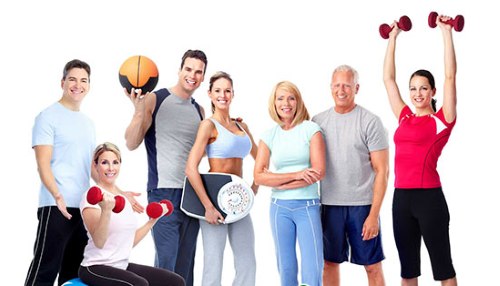
Popular sports types of gymnastics include: sports, artistic, acrobatic, aesthetic, team, aerobic. It is well known that playing sports is the key to maintaining good physical shape and improving health.
Over the millennia, humanity has invented tens and hundreds of options for competitions, disciplines and forms of sports. One of these types of physical activity is gymnastics.
Gymnastics - what it is and why is it needed
The concept of gymnastics combines a variety of physical exercises, contributing to the development or improvement of the already existing motor skills of the trainees.
A distinctive feature of gymnastics from other sports is its versatile and harmonious effect on the human body and body.
Gymnastic exercises cover all links of the musculoskeletal system, develop muscles evenly and improve coordination. At the same time, gymnastics affects not only the physical condition of a person, but also forms certain moral and volitional qualities.
It is considered one of the most important components of popularizing sports. Gymnastics can be found in schools and kindergartens, practiced at home and in fitness centers, used in manufacturing plants and in medicine.
The variety of gymnastic exercises made it necessary to systematize the types of gymnastics, which was done at the All-Union Conference in 1984.
In general, all areas of gymnastics are combined into several large groups:
- health-improving gymnastics, the varieties of which are aimed at strengthening human health (the existing classification has more than 30 of them);
- artistic gymnastics, which, in fact, is a professional sport;
- educational and developmental types that pursue not only health-improving goals, but also educational and training.

 Don't miss the most popular column article: Glutamic acid - what it is, why and how it is used in sports, bodybuilding.
Don't miss the most popular column article: Glutamic acid - what it is, why and how it is used in sports, bodybuilding.Wellness gymnastics
Wellness gymnastics is a form of physical education that is usually does not require good physical fitness and is aimed at overall health improvement, improving the current state of the body, increasing efficiency and quality of life
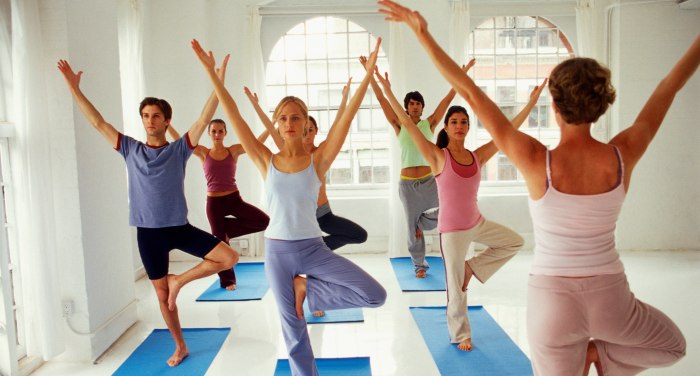
Some types of health-improving gymnastics have long received well-deserved recognition, others have only been gaining popularity in the past few decades.
Morning gymnastics (exercise)
Exercising means a set of simple exercises aimed at activating physiological processes in the body after waking up.
Basic movements:
- turns and tilts of the head;
- rotational movements of the shoulders and trunk;
- swing arms and legs, etc.
A set of exercises lasting 15-20 minutes provides a charge of vivacity and positive mood for the whole day.
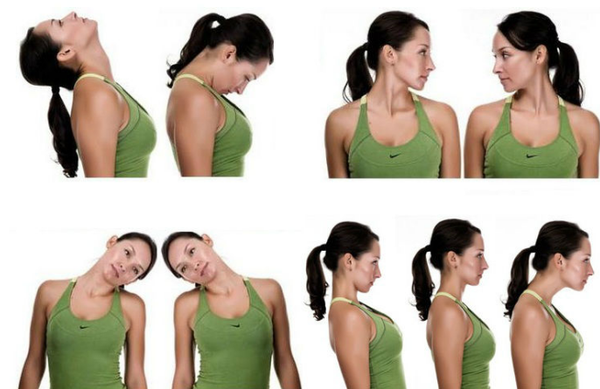
It has been scientifically proven that morning exercises have a beneficial effect on all organs and systems of human life:
- stimulates blood circulation and metabolism;
- optimizes the work of the heart and respiratory organs;
- develops muscles and joints;
- strengthens the immune system, etc.
Introductory gymnastics
Introductory gymnastics — these are small sets of exercises that have found their application in enterprises and organizations before the start of the working day. Their task is to ensure the quick entry of a person into work..
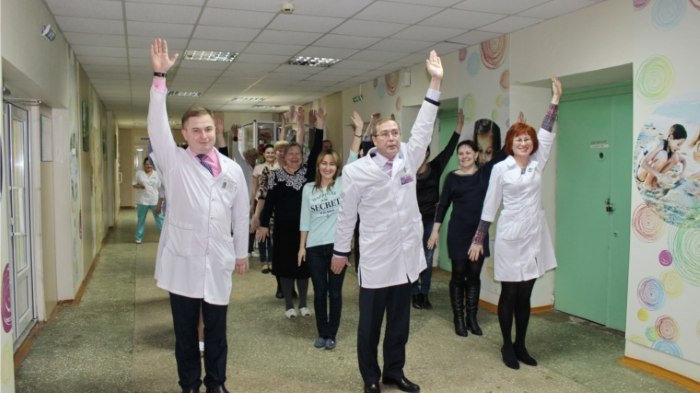
Therefore, all exercises in their content and orientation are as close as possible to the actions performed in the process of work. As a natural result — staff efficiency increases.
In general, exercises such as:
- steps and running in place;
- various kinds of movements of the arms and body;
- stretching exercises;
- exercises to improve concentration, etc.
The duration of the gymnastics is 5-7 minutes. Form of holding: collectively or individually.
Physical education (physical education in educational institutions)
Physical education — it is a type of gymnastic exercises that are used in educational institutions (mainly in primary grades and in preschool educational institutions). Physical education, as a rule, consists of 3-4 special exercises. Their duration does not exceed 1.5-2 minutes.
The form can be:
- dance;
- sports;
- motor - speech;
- warm-ups for fingers or eyes;
- breathing exercises.
Physical education minutes have established themselves as an effective way to maintain students' working capacity. It is noted that conducting them allows you to relax the nervous system and skeletal muscleswho are in tension from prolonged sitting at a desk.
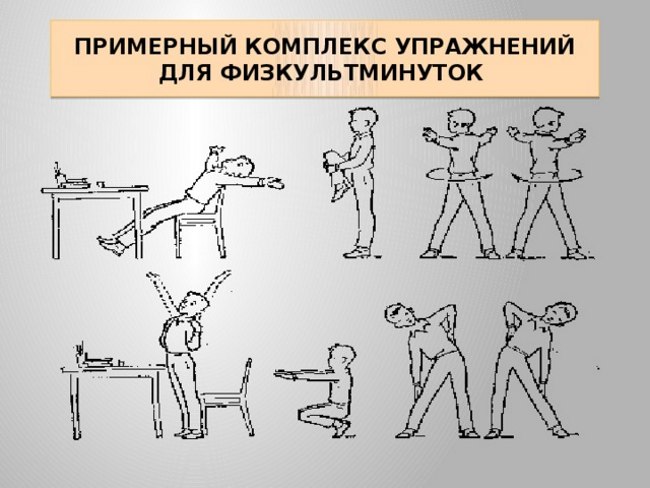
In addition, physical education provides the necessary rest for the eyes and hearing organs. And ultimately, they help students overcome fatigue and sleepiness, and relax mentally.
Hygienic gymnastics
The task of hygienic gymnastics is to ensure the maintenance of the human body in the most healthy state. A distinctive feature from other types of gymnastics in a combination of physical exercises with hardening elements and hygienic components (ambient temperature control, uniforms of clothing and footwear, hygiene, etc.).
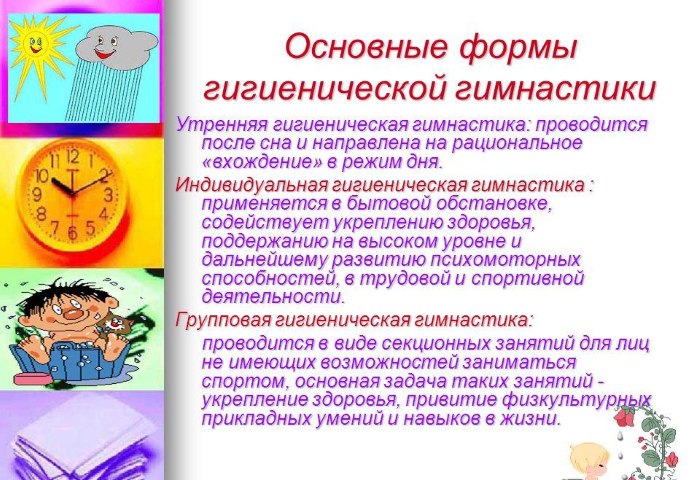
In addition to general strengthening exercises, stretching exercises are used. No tools at hand are required.
In fact, the concept of hygienic gymnastics combines such types as:
- morning exercises (exercises);
- gymnastics in the mode of the working day (introductory, physical education);
- evening gymnastics (before bedtime).
Hygienic gymnastics is suitable for people of all ages and levels of training.
Rhythmic gymnastics
Rhythmic gymnastics (rhythmics) - physical education in dance form. The exercises used are simple, but effective, since they cover all muscle groups. Their pace, shape and intensity depend on the music. Typical movements are: flexion and extension, turns and rotations, swinging legs and arms, running, jumping, jumping, etc.
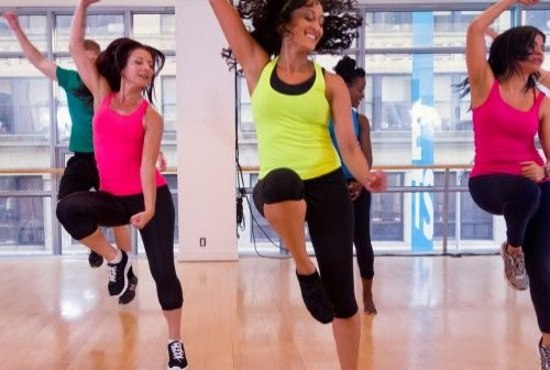
Regular exercise has a beneficial effect on heart and lung function, strengthen muscles, develop endurance and a sense of rhythm. From an emotional point of view, rhythmic gymnastics improves mood, relieves feelings of tension and adds vitality.
Physiotherapy
Designed for the rehabilitation of patients with neurological and cardiac problems, injuries of various nature and origin, etc.
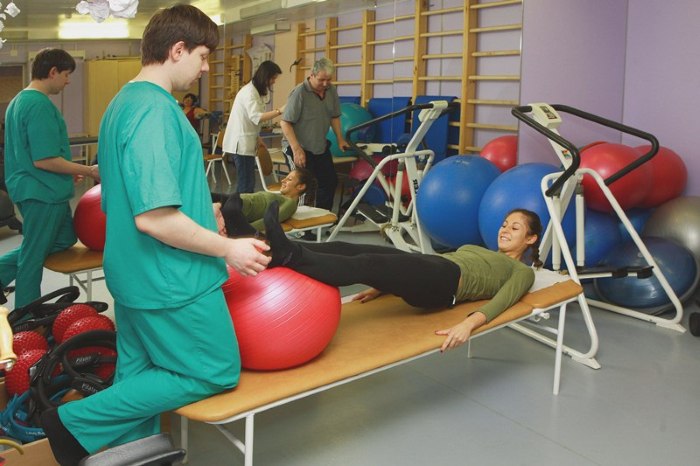
All exercises of medical gymnastics are performed statically, that is, they are usually done slowly and energized. Their action is aimed at improving the work of a certain body. Therapeutic exercises are often combined with breathing exercises.
The scope of therapeutic gymnastics is very extensive:
- injuries and malfunctions of the musculoskeletal system (including immobilization);
- scoliosis;
- neurological diseases, etc.
The form of classes: in groups and individually. The general course of treatment usually consists of 3 stages: introductory, main and final.

 Don't miss the most popular column article: Body drying for girls. Training program, detailed nutritional menu for a month by day.
Don't miss the most popular column article: Body drying for girls. Training program, detailed nutritional menu for a month by day.Non-traditional health gymnastics
In recent decades, non-traditional types of physical activity have increasingly attracted public interest.

These types of gymnastics include:
Stretching
Stretching (gymnastics of postures) is a workout that helps to stretch the muscles and ligaments, due to which the whole body becomes more flexible. Stretching advantages: helps to lose weight, removes toxins from the body, improves posture.
Callanetics
Callanetics - improving your own body by performing static exercises. The increase in load is achieved by maintaining a certain posture for more and more time. Pros: weight loss, muscle development, normalization of metabolism.
Shaping system
Shaping system - a distinctive feature is an individual selection of a training regime based on computer testing, which takes into account the peculiarities of the body structure.
The shaping system has many subspecies: classic shaping, shaping uni, shaping for pregnant women, etc. Pros: impact on certain parts of the body, weight loss, the ability to form the desired body shapes and proportions.
Eastern health systems
Eastern health-improving systems of gymnastics include various types of yoga, qigong, tsai-chi-chuan and other teachings, the home of which is the East. The main idea behind these teachings is to combine mental and physical balance.
At the same time, a harmonious attitude to the world and the normalization of the emotional state are the key to the successful physical development of a person and the preservation of his health. Advantages of the systems: not only strengthen the body, but also develop a harmonious perception of the world.
Hatha yoga
Hatha yoga is one of the branches of Indian yoga, which is a variety of exercises aimed primarily at achieving physical perfection.
This practice includes breathing exercises, elements of psychoregulation and self-control, static postures of asanas, and proper nutrition. It is believed that hatha yoga is a basic style of yoga, having mastered it, you can move on to any other techniques. Pros: increases muscle elasticity, endurance, develops a positive attitude towards the world around.
Yoga - the gymnastics of pacification
Yoga is one of the most popular forms of physical activity in recent years. At its core, it is not only a system of health exercises, but also a certain philosophical culture, which is home to India.
In fact the concept of yoga combines several types of oriental gymnastics.
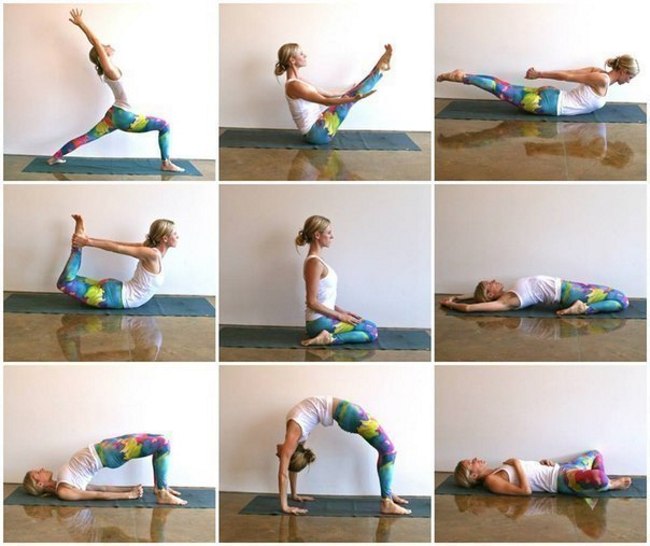
Experts have more than twenty yoga styles. But the main components of any direction are special physical postures (asanas), breathing techniques and meditation (or relaxation). They practice yoga both individually and in groups.
The high demand for yoga is associated with a number of its advantages over many other types of physical education, namely:
- availability (does not require special equipment and a gym);
- versatility (even beginners can perform many poses);
- promotes all-round human development, including spiritual development, relieves emotional stress, forms positive thinking.
Breathing exercises
Respiratory gymnastics is a special type of exercise that develops the respiratory muscles. Its tasks include health promotion and the fight against a number of diseases, such as respiratory diseases, problems with the cardiovascular system, sexual disorders, etc.
The fundamental components of training are:
- changing the frequency and depth of breathing;
- artificial breath holding;
- changing the direction of breathing (through the mouth and nose);
- artificial resistance to external flow, etc.
According to experts, with the correct exercise breathing exercises serve as an excellent prevention of bronchitis and bronchial asthma, rhinitis. In addition, breathing exercises reduce stress, relieve insomnia, and strengthen the muscles of the body.
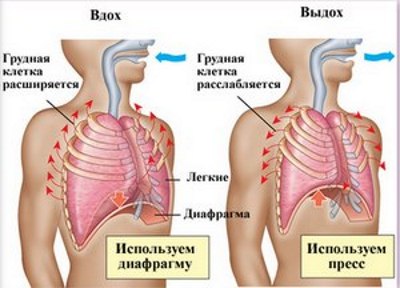
There are several types of breathing exercises. Among them: yoga gymnastics, Strelnikova's gymnastics, gymnastics to combat excess weight, etc.
Gymnastics
Sports gymnastics require a high level of training. Training begins in early childhood. Sports achievements and victories are the main task and motivation for those who are carried away by artistic gymnastics. Types (classification) include: acrobatic, rhythmic, sports and team gymnastics.
Rhythmic gymnastics
Recognized as one of the brightest, most elegant and memorable sports Athletes' performances are a combination of exercises and elements, accompanied by music... All movements are characterized by grace and plasticity.
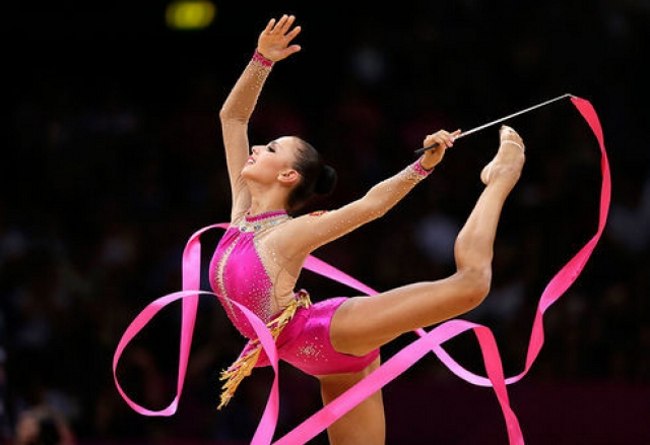
In world class competitions, the use of various items is mandatory: ribbons, balls, hoops, etc. Classes develop flexibility, plasticity, gracefulness, form the correct posture and gait.
Rhythmic gymnastics has an age limit. They start doing it at 3-5 years old, and, as a rule, already at the age of 14-16, most athletes end their careers and go to other directions. This sport is one of the most accessible, but it has quite high requirements for the appearance of athletes.
Acrobatic gymnastics
Acrobatics is a section of gymnastics that consists of exercises such as:
- jumping;
- power;
- the ability to keep balance;
- rotation of the body with and without support and a number of others.
Exercises are performed either on the floor or with the use of special equipment (rings, parallel bars, gymnastic beams). They are dynamic (somersaults, coups, somersaults) and static (stands, pyramids).
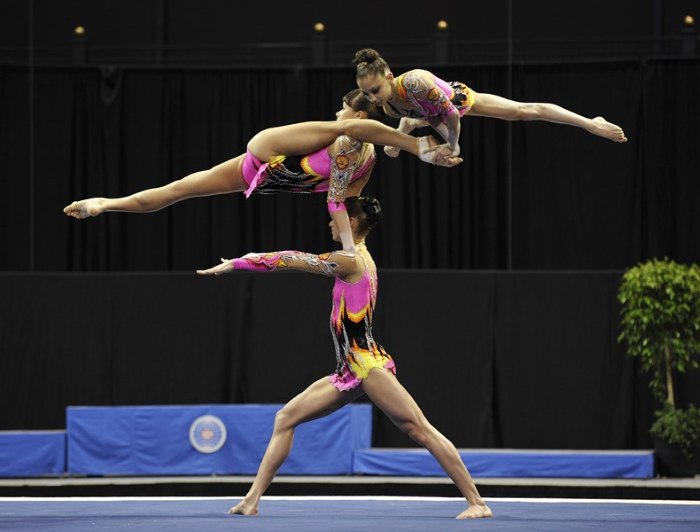
In sports acrobatics, a number of disciplines are distinguished:
- soloists;
- couples;
- groups;
- jumping on a trampoline.
Acrobatics develops agility, courage, determination, willpower, dexterity, strengthens the musculoskeletal system, develops coordination and orientation in space.
Sports aerobics
Sports aerobics is a discipline in which all exercises are performed at a very high pace with musical accompaniment. All movements are characterized by sharpness and dynamism.
From the athlete is required not only the complexity and precision of the actions performed, but also artistry.
Competitions are held both individually and in groups. It should be noted that sports aerobics is an extremely difficult sport in terms of the physical activity that the gymnast is subjected to during the performance. According to experts, his work can be compared to running 800m.
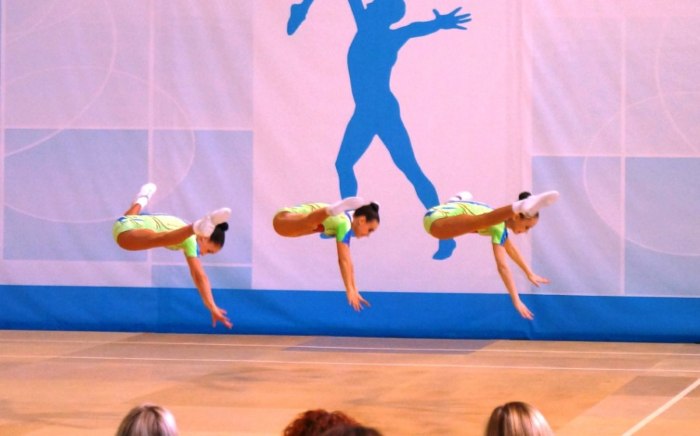
Regular exercises in sports aerobics allow you to maintain good physical shape, have a positive effect on the emotional state of an athlete, and help strengthen the cardiovascular and respiratory systems.
Educational and developing types of gymnastics
Educational and developmental gymnastics is designed to provide not only a healing effect, but also to instill an interest in sports, to understand and improve the functional capabilities of the body, to develop self-discipline.
Types (classification) include: teaching and educational, women's, athletic and professional-applied gymnastics.
General teaching and educational gymnastics
It is used in physical education lessons in all educational institutions (schools, kindergartens, universities, etc.) and in groups for middle-aged and elderly people.
The task of classes is to develop and improve the simplest motor skills (running, walking, overcoming obstacles), to teach students to control their bodies and, in general, to introduce the younger generation to sports.
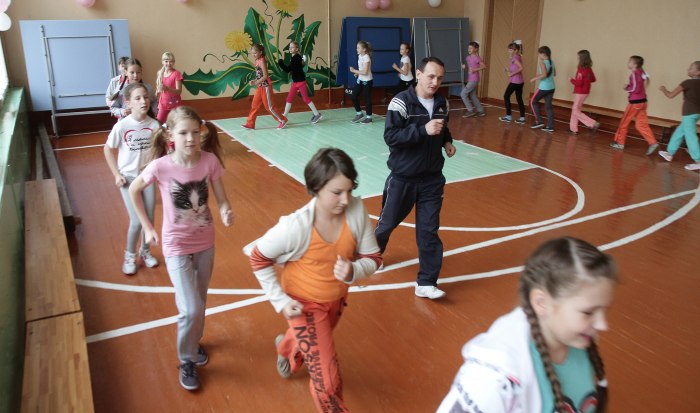
Exercises of educational gymnastics are jumps (in height, length, over gymnastic benches, etc.), some acrobatic elements (standing on the shoulder blades), etc. Trainings for the elderly are aimed at improving the clarity of the movements performed and their coordination.
Women's gymnastics
Women's gymnastics is specially designed for women. It takes into account the structural features of a woman's body. Wherein the function of motherhood is central, therefore, an obligatory component of training is exercises to strengthen the muscles of the legs, pelvis, abdominal muscles, etc.
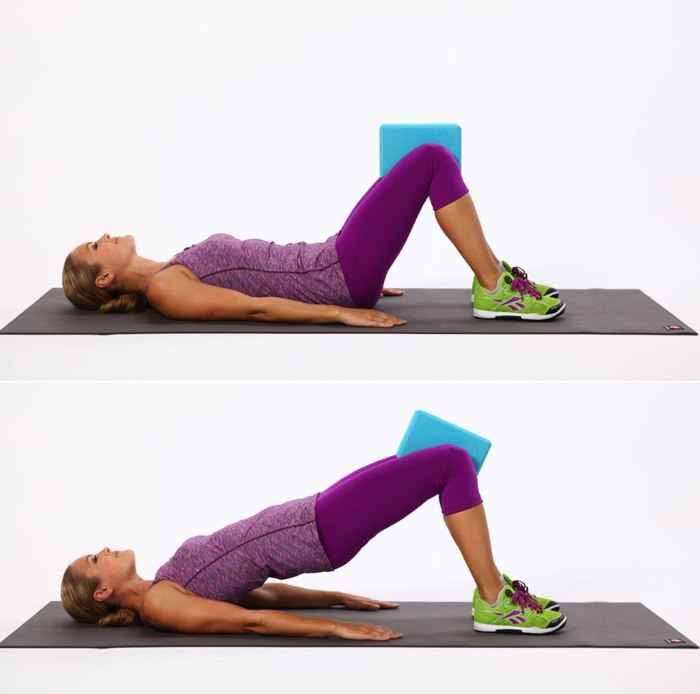
Classes combine general developmental exercises, elements of rhythmic gymnastics and some dance styles. The musical accompaniment plays an important role. Women's gymnastics promotes flexibility, gracefulness, forms a beautiful stately posture, prepares a woman's body for pregnancy and childbirth.
Athletic gymnastics
A kind of gymnastics aimed at developing strength qualities. People who go in for athletic gymnastics are distinguished by relief muscles and proportional development of the muscles of the whole body.
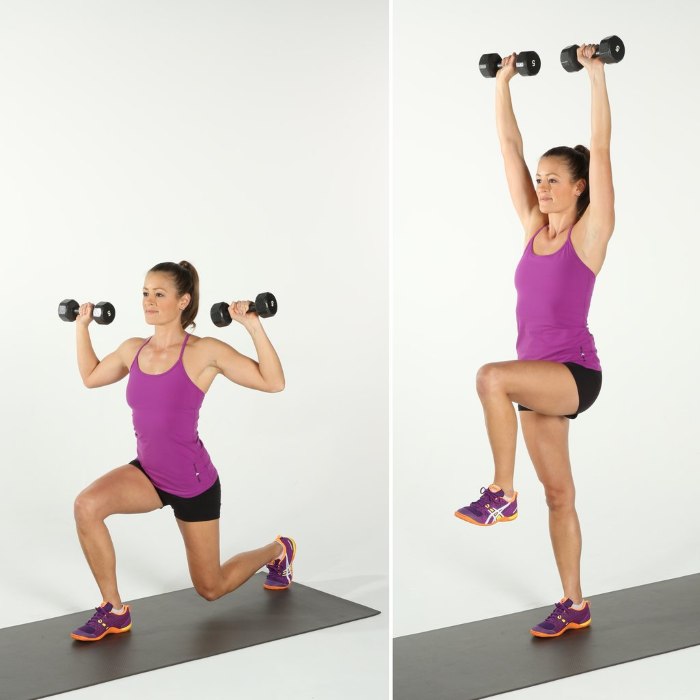
Exercises in athletic gymnastics are performed both with objects and weights (barbells, dumbbells, etc.), and without them. This type of physical activity trains the cardiovascular system., develops muscles, strengthens the nervous system, instills self-discipline.
The availability of athletic gymnastics explains its high popularity. You can do it individually, in groups, at home, in the yard, etc.
Professional applied
Applied professional gymnastics combines exercises and trainings that allow you to master new or improve existing skills of people whose profession requires the performance of complex physical actions or resistance to increased stress.
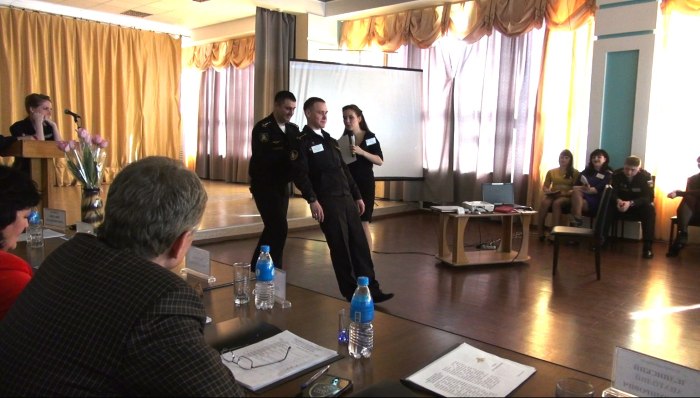
The classes themselves are focused on developing not only physical, but also moral qualities, without which it is impossible to master the chosen specialty. For instance, in many vocational schools for high-altitude installers, physical education lessons are held on a hill, which removes the feeling of fear of heights from students and develops dexterity, self-confidence and other qualities.
Preventing injuries, increasing labor productivity, improving skills in the chosen field - these are the goals that professional and applied gymnastics is focused on.
Its types (classification) depend on the field of application, for example, there is gymnastics for astronauts, pilots, firefighters, sailors, etc.
Team views
It was born in the Scandinavian countries and is represented by 3 disciplines: floor exercises (with elements of dance and choreography), mini-trampoline jumping and acrobatic jumps. All exercises are performed to music.
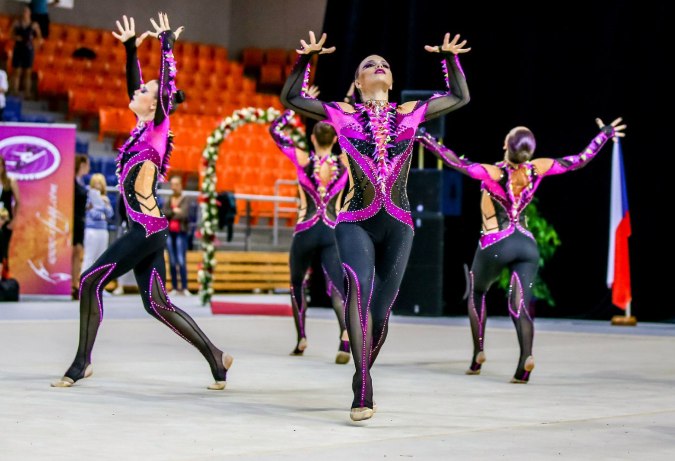
Competitions are held in 3 categories: women's, men's and mixed team performances. The composition of the team ranges from 6 to 12 members. This kind of sport is characterized by high dynamism and staginess, well-coordinated work of participants, a high level of technique of performing acrobatic elements.
A distinctive feature of the discipline is the final grade.
The result can only be a team one. The judges take into account the complexity and accuracy of the technique of each gymnast's performance and at the same time the artistry and well-coordinated work of all team members.
Circus gymnastics
A genre of circus art, which is the performance and demonstration of exercises (tricks) in public with the use of special devices and projectiles, sometimes created for a unique circus performance.
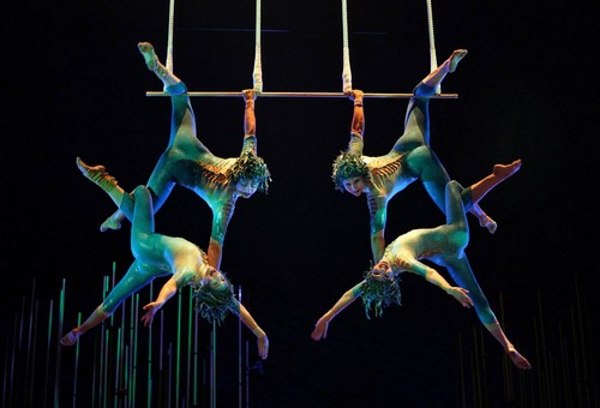
There is a division of the types of circus gymnastics depending on the place where the tricks are performed:
- parterre - exercises using apparatus and shells installed on the arena;
- aerial - exercises using equipment installed above the arena.
Moreover, each type has its own branches: exercises on horizontal bars, rings, trapeziums, bamboo, belts, etc. Often circus gymnastics implies the presence of a scenario or even a theatrical performance, the presence of a certain plot according to which the artists perform their tricks.
The task of circus gymnasts is to captivate and amaze the audience.And if artistic gymnastics is competitive in nature, then circus is a demonstration of skill.
Circus performances require good physical fitness, so often athletes from other types of gymnastics come there, or the artists are the successors of the circus dynasty, who have been doing it from early childhood.
Street (yard)
Street Workout speaks for itself - all trainings are carried out outside the home or gym... Exercises and elements are performed on street turnstiles and apparatus or simply on the ground. The main emphasis in classes is placed on strength and endurance, the ability to work with your own weight.
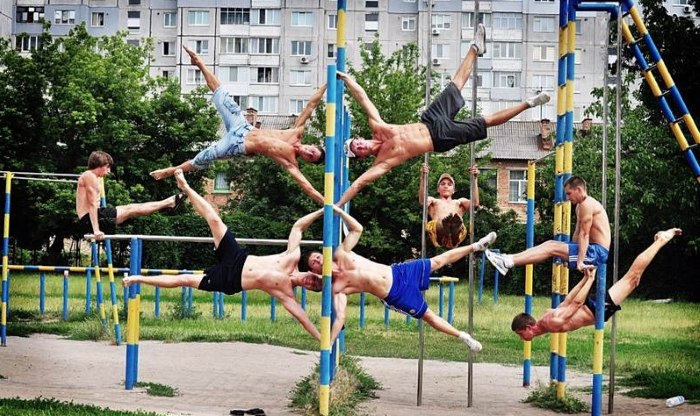
This type of training includes pull-ups on the horizontal bar, push-ups from the floor, push-ups on the uneven bars, etc. Street Workout has its own grades and standards and even competitions are held: in a free style or in the format of "battles" (including international ones).
The assessment criteria are often not only the complexity and quality of the elements, but also the artistry of the athlete.
Since 2000 Street Workout has become increasingly popular in Russia, Europe and the USA.
Flexibility, coordination, endurance, courage, determination, perseverance - these are just an incomplete list of qualities and skills that gymnastics develops. Its types and classification are very diverse.
You can choose a direction for every taste and with any financial capabilities. At the same time, sport, like other spheres of human life, does not stand still, so it is possible that in the near future more and more gymnastic directions will appear.
Interesting videos about different types of gymnastics
In this video you can find out about the basic complex of gymnastics exercises, what it is, types, features and technique of execution:
This video lesson shows a set of exercises for the smallest (group 3-5 years old) in choreography and rhythmic gymnastics. Includes splits, balance, balance, stance and stance.

I have been doing morning exercises regularly for many years. I advise everyone to do this, since the body wakes up after sleep and after a light warm-up one feels a surge of strength for the whole day.
I do not believe